
Copper ingots produced through smelting and recycling processes.
Smelting and casting is the most common method used to produce copper ingots. Copper ore is extracted from mines and processed to remove impurities, resulting in concentrated copper ore. The concentrated copper ore is then smelted in a furnace, where it is heated to high temperatures along with fluxes and reducing agents. This process converts the copper ore into molten copper, separating it from impurities. The molten copper is poured into molds to solidify and form ingots. The molds can be made of various materials, such as graphite or steel, depending on the desired shape and size of the ingots.
In this method, copper is refined and purified using an electrolytic process. A copper-rich solution, known as an electrolyte, is created by dissolving copper anodes in an acidic copper sulfate solution. The solution is then subjected to electrolysis, where an electric current is passed through it. As the electric current passes through the electrolyte, copper ions are attracted to a cathode, where they are deposited as solid copper. These deposits build up over time and can be harvested as copper ingots.
Copper is an essential mineral for living organs because it plays a key role in the production of the respiratory enzyme cytochrome oxidase C. The blood of mollusks and crustaceans is made from a substance called hemocyanin. The main ingredient in hemocyanin is copper, while the blood of fish and vertebrates contains hemoglobin, and the main ingredient is iron. The main organs of the human body in which copper is found are the liver, muscles, and bones.
What are types of copper ingots?
The molten copper metal is converted into copper ingots by casting method and has the following grades:
- 99.99% copper ingots
- 99.98% copper ingots
- 99.97% copper ingots
- 99.96% copper ingots
- 99.95% copper ingots
A copper ingot is a solid block or bar of copper that is typically rectangular in shape. It is a primary form of copper used for various purposes, including manufacturing copper products, alloys, and components. Copper ingots can also be manufactured through the recycling of copper scrap. The recycling process involves collecting copper-containing materials, such as copper wiring, pipes, or electronic components, and subjecting them to processes such as shredding, sorting, and smelting. The resulting molten copper can then be cast into ingots.
Copper and its alloys have been used for thousands of years. In ancient Rome, copper mines were exploited in Cyprus. The Latin name for copper is derived from the word сyprium, meaning metal of Cyprus, which was later abbreviated to Cuprum is coming. Copper compounds are commonly found in the form of copper (II) salts; the blue or green color of minerals such as azurite and turquoise, which were once considered gems, is due to this metal. Copper is also used in building architecture and decorative arts.
In copper ingots that are created by filling from above, when the melt inside the mold cools, a change in volume at the top of the melt causes shrinkage. Which is separated from copper ingots by machining. Another disadvantage of steel ingots is the cracks that form along the length and surface. Copper is a metallic element with high ductility and thermal and electrical conductivity properties. Pure copper is soft and malleable. Part of it in the open air is reddish-orange.
-
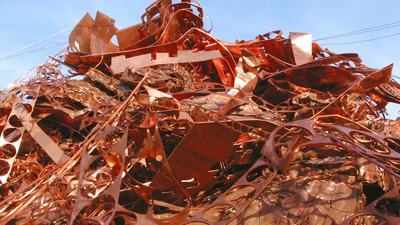
Copper recycling significantly conserves natural resources by reducing the need for new mining and extraction, thus preserving valuable copper ore reserves. The process requires 85-90% less energy than primary production, leading to lower greenhouse gas emissions and a reduced carbon footprint. Recycling also diverts copper waste from landfills, minimizing environmental pollution. The industry creates jobs in collection, sorting, processing, and manufacturing recycled copper, contributing to economic growth. Various sources of recyclable copper include wiring from electronics, pipes, fittings, and even discarded coins. The recycling process involves sorting, shredding, melting, and purifying to produce new copper products or alloys. Approximately 40% of annual copper alloy consumption comes from recycled materials. Copper"s properties such as high electrical and thermal conductivity make it essential in various applications including electrical transmission and heat exchangers.
Its corrosion resistance further enhances its utility across industrial sectors. "
-

Copper ingots are primarily produced through smelting and casting, where copper ore is extracted, processed, and refined. The smelting process involves heating concentrated copper ore with fluxes in a furnace to separate impurities, resulting in molten copper. This molten metal is then poured into molds to solidify into ingots. An alternative method for producing copper ingots is electrolytic refining, which uses an acidic copper sulfate solution to deposit copper ions onto a cathode through electrolysis. Copper ingots come in various grades, with purity levels ranging from 99. 95% to 99. 99%. These ingots serve as a fundamental form of copper for manufacturing products and alloys.
Additionally, recycling processes can convert scrap copper into new ingots by shredding and smelting used materials like wiring and pipes. Copper has historical significance dating back to ancient civilizations and remains vital in modern applications due to its excellent conductivity and malleability.
-

The Middle East and West Asia exhibit a robust demand for copper, driven by urbanization, construction, and industrial growth. Key countries like Saudi Arabia, Iran, Turkey, and the UAE are experiencing significant infrastructure development that necessitates large quantities of copper for electrical wiring and plumbing systems. Despite having some mining operations, the region remains a net importer of copper, relying on imports from major producers such as Chile and Peru. Dubai and Istanbul serve as crucial trading hubs for copper distribution. The rise in population and disposable incomes has further increased the demand for electrical devices, making copper essential in manufacturing components like transformers and motors. Additionally, the region is witnessing a growing emphasis on copper recycling to promote sustainability. Global copper prices significantly influence the local market dynamics, affecting profitability across various industries. While the high cost of copper compared to alternatives like aluminum can deter some users, its superior conductivity and safety make it a preferred choice in electrical applications. The ongoing industrial expansion across sectors such as construction and automotive continues to drive copper consumption in this region.
-
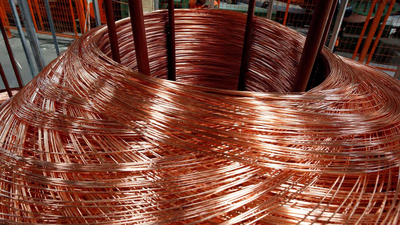
Copper toxicity can occur from excessive consumption or inhalation, leading to symptoms like nausea, abdominal pain, and severe organ damage. Acute cases are rare and often linked to occupational exposure or accidental ingestion. Wilson"s disease, a genetic disorder affecting copper metabolism, results in copper accumulation in organs, necessitating treatment to reduce intake and eliminate excess copper. Allergic reactions to copper may arise from skin contact, causing irritation or dermatitis. Copper"s antimicrobial properties have led to its use in medical settings to reduce infection risks. Recent advancements include a bioactive implant that combines collagen with copper particles, significantly reducing bacterial populations and enhancing bone growth. This innovative approach offers a potential one-step treatment for bone infections without antibiotics. While copper is essential for various bodily functions, excessive exposure can lead to health issues.
Its traditional medicinal uses are often unsupported by scientific evidence, although some claim benefits for arthritis relief. The metal"s ability to inhibit microbial growth has prompted its application in hospital environments to combat infections. "
-
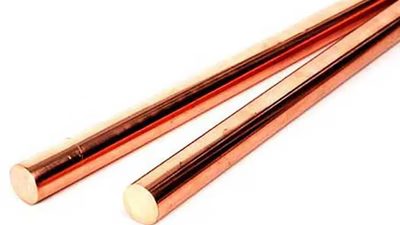
Copper is a vital transition metal, known for its high electrical and thermal conductivity. It has been utilized since ancient civilizations, marking the beginning of the Bronze Age. Found in various minerals, copper is primarily extracted from ores through mining processes. Its applications span across electrical wiring, plumbing, and architecture, making it the third most widely used industrial metal globally. The majority of copper consumption is attributed to electrical applications, with significant recycling potential that enhances its sustainability. Copper alloys like bronze and brass exhibit improved properties, further expanding its utility. Additionally, copper"s antimicrobial properties make it valuable in medical settings. However, the environmental impact of copper mining necessitates sustainable practices to mitigate habitat destruction and pollution. "
-
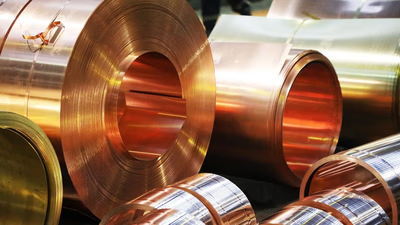
Copper and its alloys, including bronze, brass, and cupronickel, play a significant role in various industries due to their unique properties. Bronze, an alloy of copper and tin, is known for its strength and corrosion resistance, making it ideal for sculptures and mechanical components. Brass, primarily composed of copper and zinc, is valued for its malleability and attractive appearance, commonly used in musical instruments and plumbing fittings. Cupronickel combines copper with nickel to enhance corrosion resistance in marine applications. Other notable alloys include leaded brass for improved machining properties and special alloys like aluminum bronze that offer high strength and thermal conductivity. The classification of these alloys is based on their composition, with variations such as alpha brass (less than 37% zinc) and phosphor bronzes that include additional elements for enhanced performance. Understanding these types of copper alloys is crucial for businesses engaged in import-export activities within the Middle East trade platform.
-
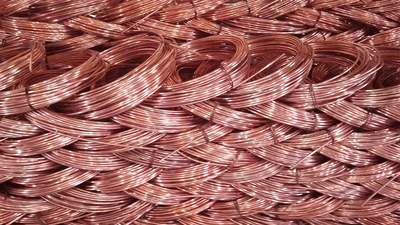
Copper is a vital metal extensively used across various industries, particularly in electricity and construction. Its excellent conductivity makes it the preferred choice for electrical wiring, power cables, and electronic devices. The electricity sector is the largest consumer of copper due to its efficiency in transmitting electricity. Additionally, copper"s strength and resistance to corrosion enhance its suitability for motors and converters. In telecommunications, copper remains essential for high-speed data transmission despite advancements in fiber optics. The metal"s versatility extends to building construction, where it is utilized in plumbing, roofing, and heat transfer systems. Its recyclability adds an environmental benefit, allowing for sustainable practices in construction. Copper"s unique properties also contribute to safety; it does not burn or release harmful gases during fires and helps prevent bacterial growth in water supply systems. Overall, copper"s multifaceted applications underscore its importance in modern infrastructure and technology.







